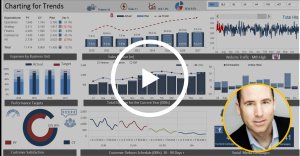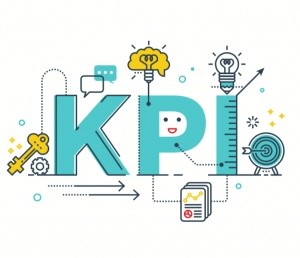
KPI Dashboard Templates Start the discussion!

What is a KPI dashboard?
A Key Performance Indicator dashboard collects, groups, organizes and visualizes an organization’s important metrics. In this way, KPI reporting serves multiple purposes within a firm.
But what are KPIs exactly?
KPIs or Key Performance Indicators are ways to periodically assess the performance of an organization, business unit, a division or employees. They commonly serve the purpose of being understandable, meaningful, and measurable.
Hence, KPI reporting is ultimately used by different parties to evaluate the effectiveness of a firm at reaching its targets.
But why is a Startup KPI Dashboard useful?
• A KPI dashboard provides a general overview of business performance and expected growth.
• KPI reporting enables organizations to access indicators, which support them in making informed decisions.
• A KPI provides real time information about the performance of a business. This enables them to know how effectively it is achieving business objectives at a given time period.
• KPI dashboards identify problem areas and help teams tackle specific problems. This is given that they are linked to target values, meaning that performance can be assessed.
How are Key Performance Indicators chosen for a given dashboard?
Using the SMART approach. This means that the KPI must:
- Be Specific: serve a specific purpose for the firm.
- Be Measurable: needs to give a value.
- Be Achievable: the defined norms for the KPI need to achievable.
- Be Relevant: needs to be relevant to the long-term goals of the firm.
- Be Time-Bound: the output should be based on a pre-defined and relevant period.
What are the different types of a KPI Dashboard?
Firstly, it is crucial to differentiate the types of KPIs. There exists high-level KPIs, which focus on the overall performance of the business, while low-level KPIs, focus on department process.
Also, not all key performance indicators are financial. They can also be non-financial meaning that they focus rather on customers and employees; for example, employee turnover.
For this reason, there exists different types of KPI dashboards that depend on the aims of the party utilizing it. A few examples are the following:
- • CEO/Executive KPI dashboard: an aggregated overview of a company’s performance and profitability. This would include sensitive KPIs, that would only be accessible to high-level executives.
- • Project management KPI Dashboard: reflects the performance of employees in a project as well as the performance of the project itself. It is aimed at keeping everyone aware of the achievements and the goals yet to be achieved.
- • Marketing KPI dashboard: reflects the digital marketing metrics of the organization, and provides an overview of the marketing team’s performance
- • Sales KPI dashboard: reflects the performance of the sales department. This helps sales managers visualize how each salesperson performs, how much income can be expected from new deals as well as depicting when marketing campaigns need to be addressed.
You don’t necessarily need to build your own dashboard from step 0. The Eloquens catalogue provides you with both KPI dashboard templates and KPI guides for creating your dashboard, which you can customize to your firm.
Also, if you’d like more information on KPI dashboards and KPI reporting, have a look at the links below:
->What is a Key Performance Indicator? by AP Institute
->What is a KPI? by Investopedia
Most popular Templates
 The complete, comprehensive course for dashboard design in Excel.12,4115add_shopping_cart$299.00
The complete, comprehensive course for dashboard design in Excel.12,4115add_shopping_cart$299.00 by Marcus Small
by Marcus Small

Departmental Performance KPI (Key Performance Indicator) Dashboard.
An easy-to-use Departmental Financial Performance KPI Dashboard in Microsoft Excel.2,152Discussadd_shopping_cart$35.00 by Steve Lindsey
by Steve Lindsey

The Ultimate Business KPI Dashboard Bundle
This exemplary financial dashboard bundle includes 9 top-tier business dashboards, ready-to-use, for your organisation.5,841Discussadd_shopping_cart$300.00 by Marcus Small
by Marcus Small

Balanced Scorecard Dashboard Excel Model
This is a balanced scorecard summary report, presented in a succinct clear format which is ready to use.9,966Discussadd_shopping_cart$149.00 by Marcus Small
by Marcus Small

HSE Performance Monitoring Tool – Manager Version
This tool is designed to generate HSE performance reports based on monthly data entries.3,2042add_shopping_cart$29.97 by SHEQXEL
by SHEQXEL

HSE Performance Monitoring Tool - Officer Version
This tool is designed to generate HSE performance reports based on daily data entries.2,3961add_shopping_cart$29.97 by SHEQXEL
by SHEQXEL








